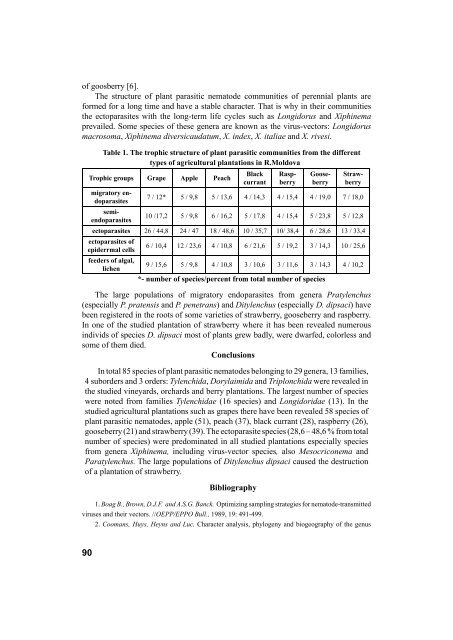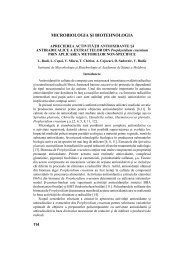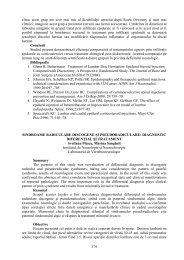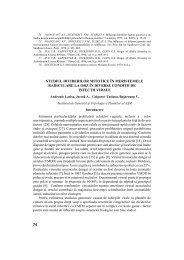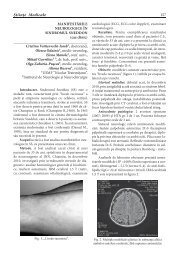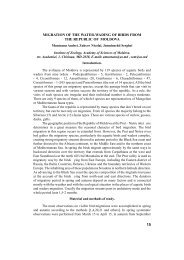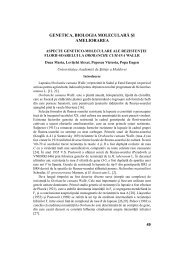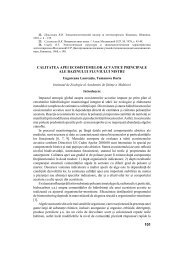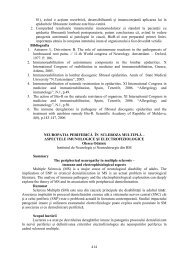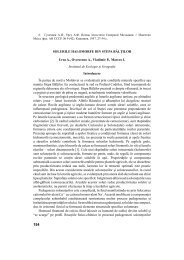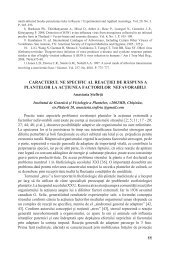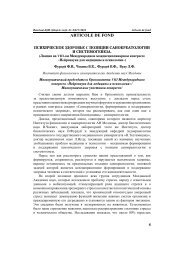crenatus Corbett 1966 (Gr, Ap, Sb), P. curvitatus Van der Linde 1938 (Gr, Ap, Pe, Bc), P. hamatus Thorne & Allen 1950 (Gr, Ap, Pe, Bc, Rb), P. microdorus Andrássy 1959 (Gr, Sb), P. nanus Cobb 1923 (Gr, Ap, Pe), P. tenuicaudatus Wu 1961 (Ap), P. veruculatus Wu 1962 (Ap); family Neotylenchidae: Deladenus durus (Cobb 1922) (Sb); family Psilenchidae: Psilenchus aestuarius Andrássy 1962 (Gr, Sb), P. aberrans Thorne 1949 (Ap), P. hilarulus de Man 1921 (Ap); family Telotylenchidae: Amplimerlinius macrurus (Goodey 1932) (Gr), Bitylenchus dubius (Bütschlii 1873) (Gr, Ap, Pe, Sb), B. parvus (Allen 1955) (Bc), Merlinius brevidens (Allen 1955) (Gr, Ap, Sb), Tylenchorhynchus cylindricus Cobb 1913 (Gr, Ap, Pe, Bc, Rb), T. elegans Siddiqi 1961 (Sb); family Hoplolaimidae: Helicotylenchus digonicus Perry 1959 (Gr), H. dihystera (Cobb 1893) (Gr, Ap, Pe, Gb, Sb), H. crenatus Das, 1960 (Gr, Pe, Bc, Rb), H. erythrinae (Zimmermann 1904) (Gr, Bc, Gb, Sb), H. multicinctus (Cobb 1893) (Gr, Ap, Pe, Bc, Rb, Gb, Sb), H. varicaudatus Yuen 1964 (Gr), H. vulgaris Yuen 1964 (Gr, Ap, Pe, Bc, Rb, Gb, Sb), Rotylenchus agnetis Szczygiel 1968 (Gr, Ap, Pe, Bc, Rb, Gb, Sb), R. incultus Sher 1965 (Gr, Ap, Pe, Bc), R. robustus (de Man 1876) (Gr); family Pratylenchidae: Pratylenchoides crenicauda Winslow 1958 (Gr, Pe, Sb), P. leiocauda Sher 1970 (Ap, Pe), Pratylenchus brachyuris (Godfrey 1929) (Gr, Ap), P. neglectus (Rensch 1924) (Gr, Gb, Sb), P. penetrans (Cobb 1917) (Gr, Ap, Pe, Bc, Rb), P. pratensis (de Man 1880) (Gr, Ap, Pe, Bc, Rb, Gb, Sb), P. subpenetrans Taylor & Jenkins 1957 (Gr, Sb); Pratylenchus sp.1 (Gb), Pratylenchus sp. 2 (Gb, Sb); family Ecphyadophoridae: Lelenchus leptosoma (de Man 1880) (Gr, Ap, Pe, Sb); family Anguinidae: Ditylenchus brevicauda (Micoletzky 1925) (Sb), D. dipsaci (Kühn 1857) (Gr, Ap, Pe, Bc, Rb, Gb, Sb), D. intermedius (de Man 1880) (Gr, Sb), D. minutus Husian et Khan, 1967 (Gr, Ap), D. triformis Hirschmann & Sasser 1955 (Gr, Pe), Nothotylenchus acris Thorne 1941 (Gr, Ap, Bc, Rb, Gb), N. acutus Khan 1965 (Gr, Ap); family Tylenchidae: Aglenchus agricola (de Man 1884) (Gr, Ap, Pe, Bc, Rb, Gb, Sb), Basiria aberrans (Thorne 1949) (Ap), Boleodorus impar Khan & Basir 1964 (Ap, Sb), B. thylactus Thorne 1941 (Ap, Pe, Bc, Rb, Gb, Sb), Coslenchus costatus (de Man 1921) (Gr, Ap, Rb), Filenchus liformis (Bütschli 1873) (Gr, Ap, Pe, Bc, Rb, Gb, Sb), F. misellus (Andrássy 1958) (Gr, Bc, Rb, Gb, Sb), F. orbus (Andrássy 1954) (Ap, Bc), F. sandneri (Wasilevska 1965) (Ap), F. thornei (Andrássy 1954) (Ap, Sb), Malenchus exiguus (Massey 1969) (Bc, Rb, Sb), M. fusiformis (Thorne & Malek 1968) (Sb), Tylenchus davainei Bastian 1865 (Gr, Ap, Pe, Bc, Rb, Gb, Sb), T. elegans de Man 1876 (Gr), T. minutus Cobb 1893 (Gr, Ap, Pe, Gb, Sb), T. striatus (Das, 1960) Meyl, 1960 (Pe, Bc, Rb). The trophic structure of plant parasitic nematode communities were studied for the different types of plantations according the feeding groups by Yeates et al. [9]. The ectoparasite species (28,6 – 48,6 % from total number of species) were predominated in all studied communities (Table 1). Abundance of nematodes including the free-living and plant parasitic nematodes at the soil pro les 0 – 20 cm were 503 – 2640 individs/100 g soil in the vineyards, 327 – 2461 individs/100g soil in the orchards of apple, 264 - 1144 individs/100 g soil in the orchards of peach, 570 – 1380 individs/100g soil in the plantations of strawberry, 787 – 1120 individs/100g soil in the plantations of black currant, 720 - 1140 individs/100g soil in the plantations of raspberry and 680 - 1200 individs/100g soil in the plantations 89
of goosberry [6]. The structure of plant parasitic nematode communities of perennial plants are formed for a long time and have a stable character. That is why in their communities the ectoparasites with the long-term life cycles such as Longidorus and Xiphinema prevailed. Some species of these genera are known as the virus-vectors: Longidorus macrosoma, Xiphinema diversicaudatum, X. index, X. italiae and X. rivesi. 90 Table 1. The trophic structure of plant parasitic communities from the different types of agricultural plantations in R.Moldova Trophic groups Grape Apple Peach migratory endoparasites semiendoparasites Black currant Raspberry Gooseberry Strawberry 7 / 12* 5 / 9,8 5 / 13,6 4 / 14,3 4 / 15,4 4 / 19,0 7 / 18,0 10 /17,2 5 / 9,8 6 / 16,2 5 / 17,8 4 / 15,4 5 / 23,8 5 / 12,8 ectoparasites 26 / 44,8 24 / 47 18 / 48,6 10 / 35,7 10/ 38,4 6 / 28,6 13 / 33,4 ectoparasites of epiderrmal cells feeders of algal, lichen 6 / 10,4 12 / 23,6 4 / 10,8 6 / 21,6 5 / 19,2 3 / 14,3 10 / 25,6 9 / 15,6 5 / 9,8 4 / 10,8 3 / 10,6 3 / 11,6 3 / 14,3 4 / 10,2 *- number of species/percent from total number of species The large populations of migratory endoparasites from genera Pratylenchus (especially P. pratensis and P. penetrans) and Ditylenchus (especially D. dipsaci) have been registered in the roots of some varieties of strawberry, gooseberry and raspberry. In one of the studied plantation of strawberry where it has been revealed numerous individs of species D. dipsaci most of plants grew badly, were dwarfed, colorless and some of them died. Conclusions In total 85 species of plant parasitic nematodes belonging to 29 genera, 13 families, 4 suborders and 3 orders: Tylenchida, Dorylaimida and Triplonchida were revealed in the studied vineyards, orchards and berry plantations. The largest number of species were noted from families Tylenchidae (16 species) and Longidoridae (13). In the studied agricultural plantations such as grapes there have been revealed 58 species of plant parasitic nematodes, apple (51), peach (37), black currant (28), raspberry (26), gooseberry (21) and strawberry (39). The ectoparasite species (28,6 – 48,6 % from total number of species) were predominated in all studied plantations especially species from genera Xiphinema, including virus-vector species, also Mesocriconema and Paratylenchus. The large populations of Ditylenchus dipsaci caused the destruction of a plantation of strawberry. Bibliography 1. Boag B., Brown, D.J.F. and A.S.G. Banck. Optimizing sampling strategies for nematode-transmitted viruses and their vectors. //OEPP/EPPO Bull., <strong>198</strong>9, 19: 491-499. 2. Coomans, Huys, Heyns and Luc. Character analysis, phylogeny and biogeography of the genus
- Page 1 and 2:
198 CUPRINS Articole de fond Ф.И
- Page 3 and 4:
200 CONTENTS Basic articles T.Furdu
- Page 5 and 6:
4 ARTICOLE DE FOND СОВРЕМЕН
- Page 7 and 8:
биофизических, био
- Page 9 and 10:
В США и Великобрита
- Page 11 and 12:
социальные нормы р
- Page 13 and 14:
организма». Cannon W.B.
- Page 15 and 16:
разных лет. Кн. 1. - Т
- Page 17 and 18:
Регуляция количест
- Page 19 and 20:
переходят в VI-III, а ч
- Page 21 and 22:
оболочка (собствен
- Page 23 and 24:
лет у леща Верхне-В
- Page 25 and 26:
промысловых ценных
- Page 27 and 28:
строгого мониторин
- Page 29 and 30:
физические нагрузк
- Page 31 and 32:
санокреатология. К
- Page 33 and 34:
Materiale şi metode Caracteristica
- Page 35 and 36:
(după 31 zile) la hibridul Xenia,
- Page 37 and 38:
Tabelul 2. Variaţia numărului de
- Page 39 and 40:
of sun ower to the infection by Oro
- Page 41 and 42: stres, care declanşează activizar
- Page 43 and 44: 72,55 şi GwPOX - cu 134,46% compar
- Page 45: espectiv de 27,15 şi 34,5 % de la
- Page 48 and 49: status-ul apei în frunze se stabil
- Page 50 and 51: APRECIEREA REZISTENŢEI STEJARULUI
- Page 52 and 53: curmat prin răcirea eprubetelor, d
- Page 54 and 55: determină că termotoleranţa stej
- Page 56 and 57: înfrunzirea celor 7 arbori luaţi
- Page 58 and 59: 2. Scurgerea electroliţilor este o
- Page 60 and 61: Материал и методы.
- Page 63: При реципрокном ск
- Page 67 and 68: Выводы. - При скрещи
- Page 69 and 70: În legătură cu cele menţionate
- Page 71 and 72: Tabelul 1. In uenţa FC D.sorokinia
- Page 73 and 74: Fig.3.Scanarea multidimensională a
- Page 75 and 76: Examinarea valorilor indicilor de c
- Page 77 and 78: obţinerea a peste 80 unităţi de
- Page 79 and 80: ani înălţimea tufelor a constitu
- Page 81 and 82: Până în anul 4 pe rod (anul 5 de
- Page 83 and 84: tulpinile gerone are calităţi pro
- Page 85 and 86: 82 ZOOLOGIA ПЕРЕЛЕТНЫЕ И
- Page 87 and 88: личинок. Если же др
- Page 89 and 90: 21 соответственно, п
- Page 91: - Gr, apple - Ap, peach - Pe, black
- Page 95 and 96: during spring 2008 at Rybachy Biolo
- Page 97 and 98: While these ticks rarely transmit h
- Page 99 and 100: Molecular evidence of co-infection
- Page 101 and 102: Among the pests of fruit trees in E
- Page 103 and 104: amylovora type strain 1⁄79Sm did
- Page 105 and 106: îurilor mici sunt fragmentare şi
- Page 107 and 108: 104
- Page 109 and 110: Analizând distribuţia populaţiil
- Page 111 and 112: 108 Характеристика б
- Page 113 and 114: 110 Proisotoma minima (Absolon, 190
- Page 115 and 116: 112 Cryptocephalus violaceus Laicha
- Page 117 and 118: голарктическим аре
- Page 119 and 120: 11 12 13 14 15 16 17 18 19 20 21 22
- Page 121 and 122: 118 Fig. 2. Indicii de diversitate
- Page 123 and 124: şi dezvoltare a ştiinţelor biolo
- Page 125 and 126: 122 360 min 10 51,70 ± 0,35 25,85
- Page 127 and 128: Acest mozaic al valorilor activită
- Page 129 and 130: 126 40 63,19 ± 5,24 61,11 ± 6,36
- Page 131 and 132: 128 19. Minea R., Brasoveanu M., Gr
- Page 133 and 134: spori cu densitatea 3x106 spori/ml,
- Page 135 and 136: 132 Figura 1. Activitatea antimicro
- Page 137 and 138: iprzhr/biomed. html. 7. Lahtinen Sa
- Page 139 and 140: menea cantitate de aminoacizi liber
- Page 141 and 142: symbiotic system. Докл. Бъл
- Page 143 and 144:
e cient raport lichid cultural : so
- Page 145 and 146:
142 Figura 3. Dependenţa randament
- Page 147 and 148:
144 Activitatea pectolitică a prep
- Page 149 and 150:
ECOLOGIA ŞI GEOGRAFIA ИСПОЛЬ
- Page 151 and 152:
водопользования и
- Page 153 and 154:
Табл. 2. Перечень пе
- Page 155 and 156:
Созданная пилотная
- Page 157 and 158:
of management tasks // Proceedings
- Page 159 and 160:
hidrogenului sulfurat. De asemenea,
- Page 161 and 162:
Fig. 1. Evoluţia cantităţii luna
- Page 163 and 164:
Concluzii: 1. Precipitaţiile căzu
- Page 165 and 166:
5,9) intermediar, se sedimentează
- Page 167 and 168:
9,4%. Variaţia coe cientului de do
- Page 169 and 170:
de acumulare a MG în plante la pol
- Page 171 and 172:
166 ANIVERSĂRI SAVANT ŞI CHIRURG
- Page 173 and 174:
altor indici hemodinamici la bolnav
- Page 175 and 176:
a veni în ajutorul celor mai nevoi
- Page 177 and 178:
altor componente ale mediului ambia
- Page 179 and 180:
174 PERSONALITĂŢI NOTORII A TRIBU
- Page 181 and 182:
176 ПРОФECCOP П. И. НЕСТ
- Page 183 and 184:
почвенные, энтомоп
- Page 185 and 186:
alte obiecte acvatice. În loc de
- Page 187 and 188:
1.3 şi 1.4 - „Râurile din bazin
- Page 189 and 190:
182 CRONICĂ ŞTIINŢIFICĂ FIZIOLO
- Page 191 and 192:
184 ABSTRACTS UDC 612.821 + 616.89
- Page 193 and 194:
UDC: 635.64:575. EVALUATION OF THE
- Page 195 and 196:
Moldovei. Ştiinţele Vieţii. 2008
- Page 197 and 198:
precipitations, which are trained f
- Page 199 and 200:
низких температура
- Page 201 and 202:
УДК:575.852 ПЕРЕЛЕТНЫЕ
- Page 203 and 204:
Aspergillus avus, Aspergillus alli


